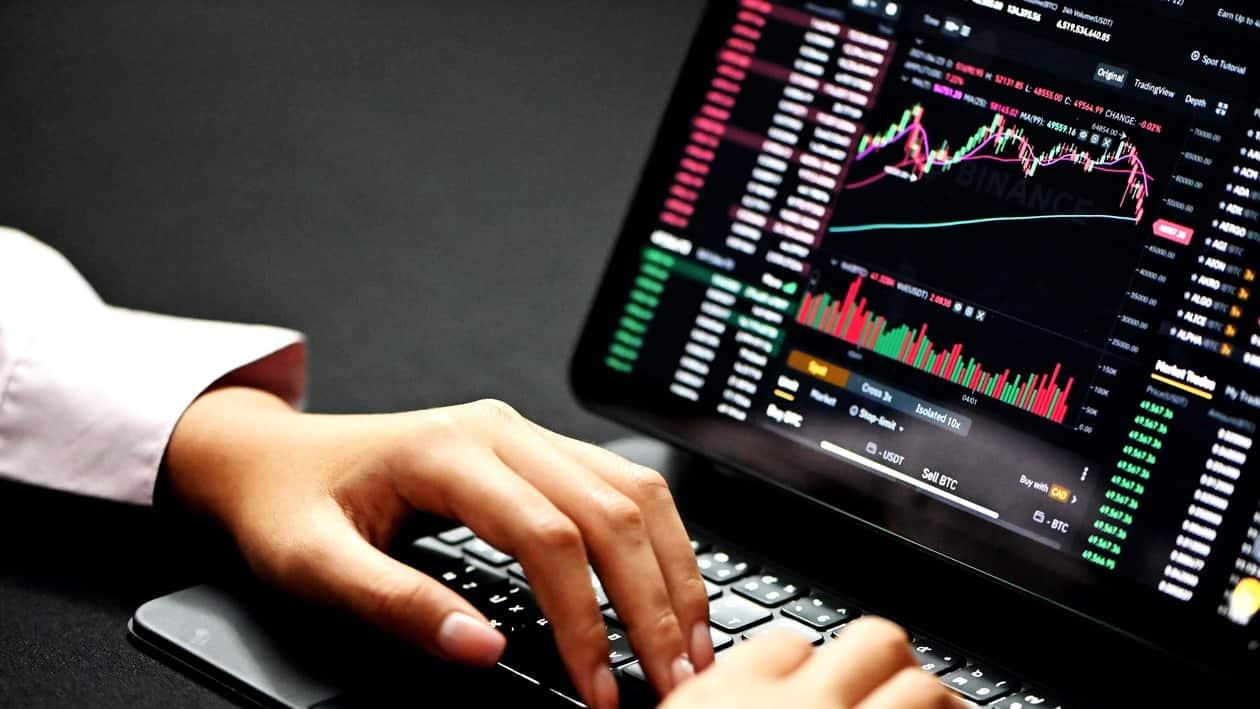A doji is a pattern that appears during a trading session when an asset's beginning and closing prices are almost identical. The Japanese term "doji" means "blunder" or "mistake," and since there aren't many occasions when the open and close prices are almost identical, these candlestick patterns are known as doji.
They are commonly considered as components of bigger patterns and do not appear very frequently under ordinary conditions. This pattern may appear when neither buyers nor sellers can take the upper hand in the market.
When the market starts, bullish traders drive prices upward, while bearish traders reject the higher price and push it back down, forming this candlestick. It's also plausible that bullish traders fight back and raise prices while bearish traders attempt to drive prices as low as they can.When the price closes at the same level as it opened, or very close to it, the doji candlestick pattern is formed.
Types of Doji Candlestick
Dragonfly Candlestick
When the opening, high, and closing prices are fairly comparable, a "T"-shaped candlestick pattern called the dragonfly doji is formed. The Dragonfly can also happen when these prices are all the same, however it is uncommon. It serves as a technical indication that alerts traders to the possibility of a price reversal in the asset.
A dragonfly doji has a lengthy lower tail, which means that the market has been saturated with selling and has pushed the price down for that period. But at the conclusion of that time frame, the closing price is still able to remain at the open price level. It implies that there were enough buyers in the market to absorb this level of selling and bring the price back.
Unlike price reversals, which happen often, the dragonfly doji is extremely unusual. Consequently, the dragonfly doji is not a very accurate sign of price reversals. It's not a given that the price will stay in the trend even with the confirmation candlestick.
READ MORE: Five bullish candle patterns you should know
Gravestone Candlestick
When the open, high, and closing prices are almost identical, a candlestick with an inverted "T" shape is called a "gravestone doji." When the bulls are successful in pushing prices upward, the Gravestone Doji pattern is formed. When it reaches the day's high, though, a zone of resistance is created, and the selling pressure drives the prices back down to the day's opening price. This demonstrates that the markets have utterly rejected the optimistic rising advance.
Gravestone Doji pattern provides critical cues of a trend shift for technical traders. Trading professionals may use it to visually assess where market resistance is and, likely, the end of a long position. Gravestone Doji, however, doesn't prove anything on its own. To establish the conclusion of an uptrend, confirmation from the candlesticks developing next to the gravestone is required.
Long-Legged Doji Candlestick
A candle known as a long-legged doji has a small real body and lengthy upper and lower shadows. The pattern indicates that buyers and sellers are unsure of each other and that a transitional period is about to begin in the market. There are clear signs of the trend reversing in such a situation.
Once the candle's high has been surpassed, long trades can be placed in the case of a bullish long legged doji. In the case of a bearish long legged doji, shorts can be started immediately the candle's low is broken.
The long-legged doji candlestick pattern, which represents a struggle between bulls and bears, is a sign of uncertainty. It is seen to occur when prices fluctuate significantly above and below the day's opening and closing values before the closing price ultimately settles close to or at the opening price.
READ MORE: All you need to know: Five bearish candle patterns for trading in the stock markets
Doji Star Candlestick
A Doji Star candlestick pattern is made up of three bars. With the identical opening and closing values and equally long upper and lower wicks, the doji star resembles a star. It arises when neither a bullish nor a negative trend is strong enough to influence market sentiment.
It is regarded as an indication that the market's present trajectory may soon reverse itself. It is a flexible candlestick pattern that comes in both bullish and bearish variations. The trend it is a part of determines its variations. A bullish candlestick before the doji formation may signal an uptrend, while a bearish candlestick below the pattern's low may be a signal to sell.
Four price Doji Candlestick
Given that prices did not fluctuate in either direction during the session, the four price doji is identified by a single straight line with no upper or lower extensions. The pattern gets its name because the high, low, open, and close are all at the same level, which may indicate a market that is calm or characterised by a high amount of uncertainty.
A four-price doji candle is an indication that neither buyers nor sellers are motivated or interested. In essence, it indicates that there is minimal market activity and that the asset would be difficult to transact on. If there is simply a one-two trade at the same price, the four prices will not change. This characteristic severely limits the relevance of four-price doji. It is challenging to draw any firm conclusions from it, and given how rarely it occurs, it is also tricky to conduct empirical research on this pattern.
Conclusion
When seen at the tail end of uptrends or downtrends, various doji patterns can be helpful trend reversal indicators. When they happen at the start of a trend, they might not be as powerful of a signal. In these circumstances, they can only denote hesitation. Therefore, while employing doji patterns to make trades, it's vital to take into account current market circumstances as well as other analysis criteria.
